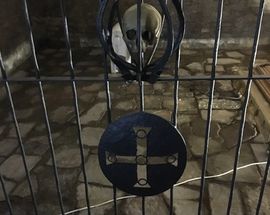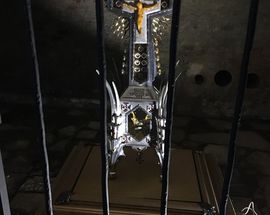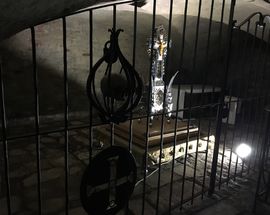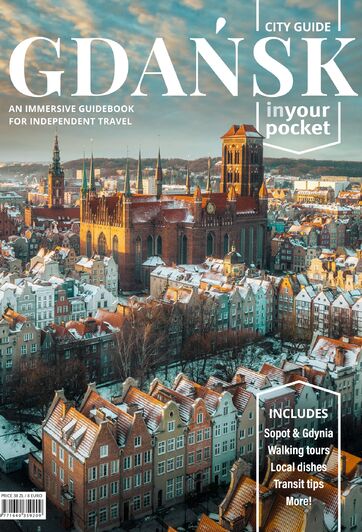The Crypt of Skulls in St. Bridget's Church
more than a year agoA church on this spot can be dated back to the 14th century. Originally a small chapel in the shadow of its more important neighbour at St Catherine's (Sw. Katarzyny), St Bridget’s took on more importance when the relics of St. Bridget of Sweden rested here on their journey between Rome and her home in Vadstena in Sweden. St. Bridget of Sweden or Birgitta of Vadstena is one of Sweden’s best-known saints and an order built up around the small chapel connected to the mother house in Vadstena. A monastery was created in the Saint’s name, interestingly housing both monks and nuns who were separated by a high wall.
The fortunes of the monastery and church ebbed and flowed over the years but it was a place of religious vocation until Napoleon’s armies arrived at the beginning of the 19th century. The buildings were requisitioned and turned into barracks. The years after Napoleon had been banished improved, but not by a great deal as the Prussian king Frederick William III decreed in 1817 that the monastery would become the property of the Prussian state on the death of the last remaining nun. That happened in 1885 and Sister Anna Maria Netka was buried in the church alongside many nuns who had gone before her.
The monastery buildings had been demolished in 1849-51 and St Bridget’s became a parish church. It survived in this role until 1945 when it, as with virtually every other church and most other buildings in old city of Gdansk, was flattened by the Soviet army’s arrival in the city. It stood desolate until the early 1970s when the Catholic church took over the remains and appointed Father Henryk Jankowski to the parish. With little regard for permissions Father Jankowski set about rebuilding the church and a short film which shows in the church outside of mass times show him celebrating mass in the bombed out ruins.
The church was rebuilt to resemble its original shape during the 1970s and was re-consecrated in 1983.
In 2010 some work on the spiral staircase to the choir revealed a bricked up crypt directly under the ground level chapel found at the rear of the church. Having broken through the crypt was discovered to hold hundreds of bones, stacked to knee-high. Eventually the original entrance was found which contained a partly destroyed inscription – 'Memento Mori' and the letters DC. The Latin can be translated to ‘Remember Death’ but the piece of stone with the Roman numerals was damaged. It can be assumed that the original inscription would have read A.D. MDC. so likely dating the crypt to the year 1600.
The bones were taken away for research and tests are still ongoing. The head of restoration work at St. Bridget’s told local news that he was fairly certain the bones were not from original burials but most probably moved to the crypt at some later date. When this happened is a matter of debate.
As the town developed from its origins just to the south of St Bridget’s and new buildings were raised, it was often the case that old burial grounds were cleared to make way for new construction. The bones could therefore date back to the 14th or 15th century. Another suggestion is that when the church was rebuilt in the 1970s, the bones of those buried within the church walls during the previous 350 years could have been gathered and moved to the crypt. The problem is that there is no documentation to confirm this second theory so the bones have now been taken away for testing.
The crypt has now been cleaned and opened to visitors. The entrance can be found inside the church at the very back of the church directly in line with the altar. As you descend the stone steps note the skull and tibia alongside the inscription ‘Memento Mori’ as you find yourself in a low roofed cellar. A metal lattice fence has been fitted beyond which you’ll see a decorative vessel holding the relics of St. Bridget. The parish priest, Father Ludwik Kowalski told reporters that the body of St. Bridget supposedly rested in this general area though they are not sure whether it was the upper or lower levels. They are held in a decorative casing with silver roses presented to the parish by the Wawel Cathedral in Kraków.
There are two skulls mounted in the crypt besides the relics. The one on the left probably belonged to a woman and if you look closely you can notice some greenish discoloration. This is probably the remains of hair decorations.
/gdansk/st-bridgets-church_16186v
Best known as a sanctuary for the leaders of Solidarność under Martial Law








Comments